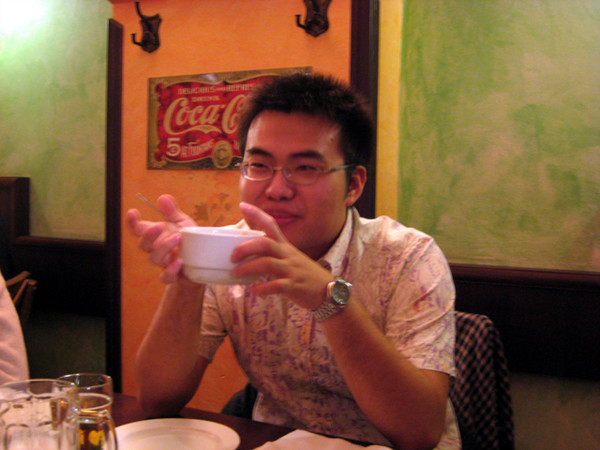Contact
Email : Tao.Li@irisa.fr
Address : IRISA / INRIA Rennes
Campus Universitaire de Beaulieu
35042 Rennes cedex - France
Tel : +33 2 99 84 71 64
Fax : +33 2 99 84 71 71
Assistant : +33 2 99 84 22 52
(Céline Gharsalli)

In 2009, I received an Engineering Master degree in industrial computer science and electronics in INSA Rennes.
Then I joined the Lagadic research team in IRISA and am currently a PhD student under the supervision of Alexandre Krupa and François Chaumette on the command of tele-ultrasound robot using visual servoing.
More information in my resume.
PROSIT objectives are to develop, for an end-to-end platform, a dedicated multi DOF robotic system usable for a tele-echography diagnostic application with different autonomous tasks based on échography visual servoing.
Active contourThe objective is to develop an optimal parametric active contour method based on Fourier descriptors to detect and track a contour (convex or concave) from a sequence of echography images in real-time. The proposed method is validated with simulation and real echography images. |
Simulation |
Simulation |
Maintaint visibilityThe objective is to develop a multi-task control method to maintain the visibility of an anatomic element of interest while the doctor tele-operates an 2D ultrasound probe held by a medical robot. The prior task consists in automatically maintaining several visual constraints that guarantee an intersection between the ultrasound image plane and the anatomic object of interest and the second task allows the medical expert to manually apply probe motion through tele-operation. Unlike classical visual servoing technique which continually regulate the current visual features to desired values, this control approach gradually activates the regulation of one or several ultrasound visual features that go close to fixed limits in such a way to keep them in a safe domain. The main advantage of this approach is to give to the clinician the control of all the degrees of freedom of the probe to examin the patient while automatically preserving the visibility of the element of interest if required. |
Experimentation |
Complete list (with postscript or pdf files if available)
[an error occurred while processing this directive]